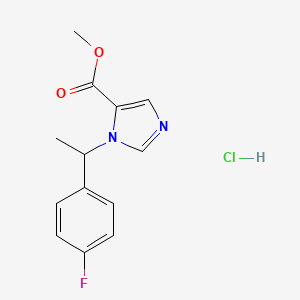|
Name: Alfaxalone
Type: Sedative
AKA: Alfaxan, 5alpha-pregnan-3alpha-ol-11, 20-dione

|
|
II. Natural Derivative
Synthetic substance, no natural derivative
 |
|
III. Chemical Profile (IUPAC name)

|
|
IV. History
Alfaxalone, a neurosteroid, was developed in the 1970s. It is used as an anesthetic and sedative. Its history includes its role in veterinary medicine and ongoing research into its effects and applications.

|
|
V. Legal Information
Alfaxalone, a neuroactive steroid used as an anesthetic, is generally not classified as a controlled substance but is regulated in medical settings. Its legal status varies by country, focusing on its use in veterinary medicine and anesthesia.
US Federal Schedule - IV
Schedule IV drugs, substances, or chemicals are defined as drugs with a low potential for abuse and low risk of dependence. Some examples of Schedule IV drugs are: Xanax, Soma, Darvon, Darvocet, Valium, Ativan, Talwin, Ambien, Tramadol.
Key US Federal Policies:
Controlled Substances Act. Public Law: Public Law 91-513 (text can be found on GovInfo) (https://www.dea.gov/drug-information/csa). Date enacted: October 27, 1970.
|
|
VI. Physical Effects
Alfaxalone, a neuroactive steroid, is used as an anesthetic and for sedation. As a downer, it induces significant sedation and relaxation. Short-term effects include anesthesia and drowsiness, while long-term use may lead to dependence and cognitive impairment. Overdose risks involve severe sedation and respiratory issues. Safe dosing requires precise medical supervision. Recent findings focus on its use in anesthesia and potential side effects.  |
|
VII. Psychological Effects
Alfaxalone, a neuroactive steroid, affects GABA-A receptors, providing sedative and anxiolytic effects. Immediate effects include sedation and reduced anxiety, with long-term use potentially leading to cognitive impairments. Research examines its use in anesthesia and potential psychological impacts.
 |
|
VIII. Culture
Alfaxalone, a neurosteroid anesthetic, has no historical or cultural lore due to its recent development. It is used in veterinary medicine for its anesthetic properties. Its modern cultural significance lies in its role in improving animal welfare and veterinary practices. Proponents include veterinarians and animal welfare advocates, while there are no significant opponents. Its use is strictly medicinal, reflecting advancements in veterinary anesthetics and the ongoing evolution of animal care standards.
 |
